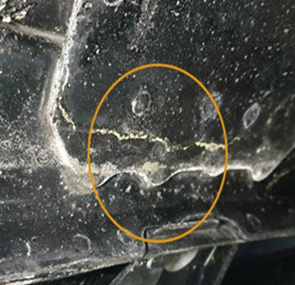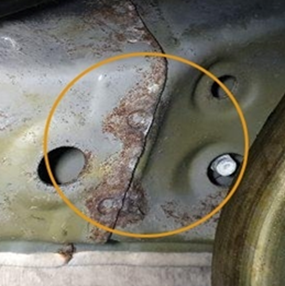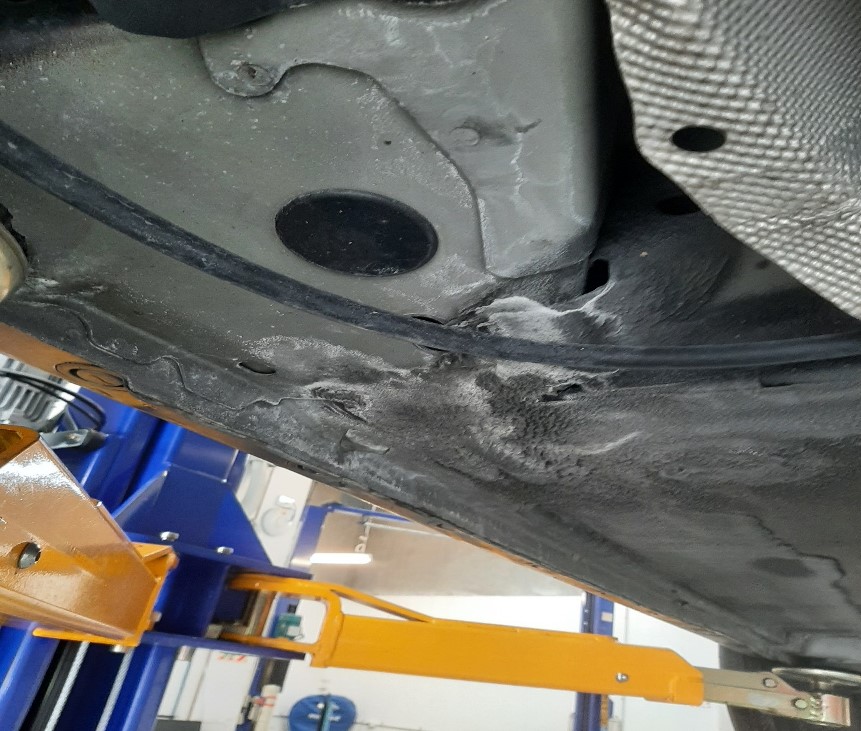Background
Acid washing is a treatment being used to repair corrosion in vehicles, in particular the underbody structure and components.
The process involves the use of a chemical mix containing an acid base liquid, phosphoric acid is commonly used, to remove corrosion and treat the metal area. The following photos show examples of visible signs of acid wash repair.



Visible signs of an acid wash repair include:
- The area has been cleaned and a clear topcoat, or no topcoat applied.
- A white residue is noticeable in joints, seams, or coming through underseal/topcoats.
- Corrosion is still visibly active in an area that has been treated.
An area of metal that has not been acid washed correctly will continue to degrade within a short time and can be detrimental to the vehicle structure.
Application
When visible signs of acid wash repair as described above are observed by an inspector at an entry compliance inspection the vehicle must be failed and referred to a Repair Certifier for assessment.
The threshold for requiring repair certification instructs 'A vehicle must be referred to a specialist repair certifier if signs of repair, rust prevention, acid wash or under-sealing to any part of the vehicle structure are evident'. The repair certifier will assess the repair and decide if it requires remedial work and a Light vehicle repair record of certification (LT308) issued, or if the repair is acceptable a No repair certification required declaration – light vehicle (LT307) issued.